I’ll never forget the first time I picked up “Master and Commander” during a rainy weekend. What I thought would be a quick read turned into a three-day binge that left me googling “how to join the Navy” at 2 AM (spoiler alert: I didn’t). That’s the power of great naval fiction – it grabs you by the collar and doesn’t let go until you’ve lived through every storm, battle, and moment of triumph alongside the crew.
After years of devouring maritime literature, I can tell you that naval stories offer some of the most gripping narratives you’ll ever encounter. These tales combine authentic maritime culture with universal themes of courage, sacrifice, and survival that’ll stick with you long after you’ve forgotten what you had for lunch yesterday.
From submarine stories that’ll make you feel like you can’t breathe to sweeping historical epics that span entire wars, naval fiction covers every genre and time period imaginable. I’ve put together 25 incredible stories across six different categories to help you discover your next favorite maritime adventure.
Whether you love books where the authors really did their homework on historical details or prefer fast-paced modern thrillers, this guide will help you find stories that’ll keep you turning pages way past your bedtime.
Table of Contents
-
What to Consider When Choosing Your Perfect Naval Story
-
Historical Naval Fiction (Stories 1-5)
-
Modern Military Thrillers with Naval Elements (Stories 6-9)
-
Submarine Stories Featuring Naval Themes (Stories 10-13)
-
Naval Adventure & Exploration Tales (Stories 14-17)
-
Contemporary Naval Fiction (Stories 18-21)
-
Biographical & True Naval Stories (Stories 22-25)
-
How Each Story Matches Your Reading Preferences
-
Crafting Your Own Naval Stories with Nairrate
TL;DR
-
Pick based on your mood – want historical accuracy or pure entertainment?
-
Character focus varies from individual heroes to entire crew dynamics
-
Story scope ranges from claustrophobic submarine tales to massive fleet battles
-
Modern stories include cutting-edge tech and current world tensions
-
Authentic naval culture adds serious credibility to the stories
-
25 stories span six categories: historical fiction, modern thrillers, submarine stories, adventure tales, contemporary fiction, and biographical accounts
-
Each story offers unique takes on maritime life and naval service
-
Simple criteria help you match stories to what you actually want to read
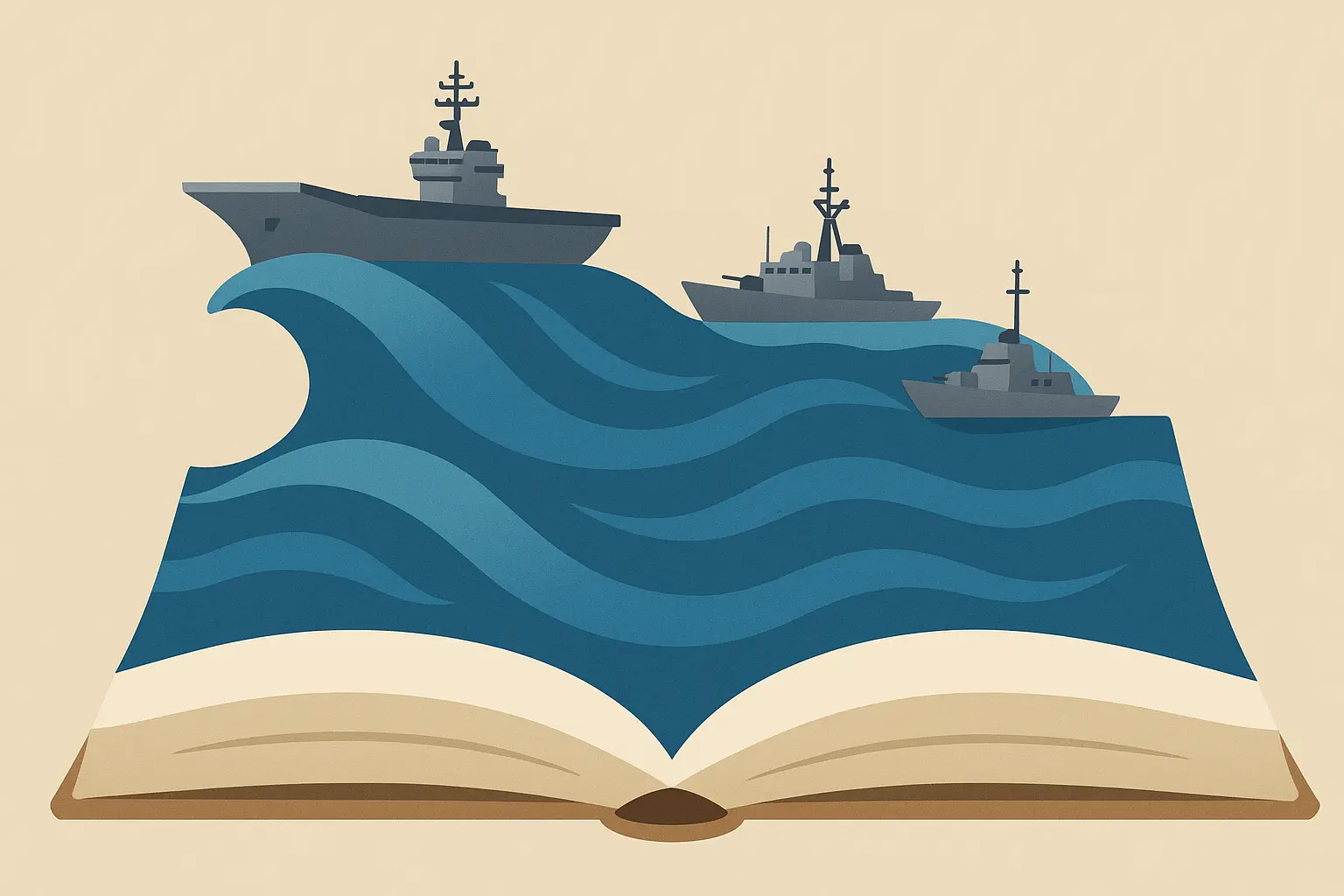
What to Consider When Choosing Your Perfect Naval Story
Look, picking the right naval story isn’t rocket science, but there are a few things worth thinking about before you dive in. I’ve learned this the hard way after recommending “Das Boot” to my cousin who wanted something “light and fun” (that didn’t go well). Here are six things that’ll help you find books you’ll actually finish and love.
Genre and Tone Preferences
Your reading mood determines everything, and I mean everything. Some days you want serious historical fiction that makes you feel like you’re actually living through the Napoleonic Wars. Other days you just want submarines chasing each other around the ocean while things explode.
Historical fiction gives you that deep period immersion where you’ll learn more about 18th-century naval life than you ever thought possible. Contemporary military thrillers deliver fast-paced modern action with all the latest tech. Maritime adventures are pure escapist fun – think treasure hunts and storms. Biographical accounts give you the real deal, straight from people who actually lived it.
I find myself switching between these moods depending on what’s happening in my life. Stressful week at work? Give me a straightforward adventure. Quiet weekend? Bring on the 800-page historical epic.
When exploring different genres, understanding story theme examples can help you identify which maritime themes resonate most with your reading preferences.
|
Genre Type |
What You’re Getting Into |
Time Investment |
Difficulty Level |
|---|---|---|---|
|
Historical Fiction |
Deep period immersion |
8-12 hours |
Pretty challenging |
|
Military Thrillers |
Fast-paced action |
6-8 hours |
Just right |
|
Adventure Tales |
Pure fun |
5-7 hours |
Easy going |
|
Biographical Accounts |
Real-world learning |
10-15 hours |
Challenging |
|
Submarine Stories |
Psychological tension |
7-10 hours |
Moderately tough |
|
Contemporary Fiction |
Modern relevance |
6-9 hours |
Just right |
Historical Accuracy vs. Entertainment Value
Here’s the thing – some books are written by authors who spent years researching every single detail of naval life, down to what sailors ate for breakfast in 1805. Others take some creative liberties to keep the story moving. Neither approach is wrong, but you should know what you’re getting into.
Take Patrick O’Brian’s “Master and Commander” series – readers often spend months working through all 20 books specifically because O’Brian’s research is so thorough you feel like you’re actually aboard HMS Surprise. The guy knew his stuff, and it shows.
On the flip side, Tom Clancy’s “The Hunt for Red October” takes some technical shortcuts to maintain that thriller pace, but it still feels authentic enough that you’ll walk away feeling like a submarine expert (or at least thinking you are).
Character Development Focus
Different stories focus on different human elements, and this can make or break your reading experience. Some center on individual heroes – one person facing impossible odds and somehow pulling through. Others are all about crew dynamics and how people work together (or don’t) under pressure.
Then you’ve got leadership stories that dive deep into what it’s like making life-or-death decisions when everyone’s looking to you for answers. And personal transformation tales show how naval service changes people in fundamental ways.
The best naval fiction often combines multiple approaches, but usually one dominates. Figure out which type of character story grabs you most.
Scope and Scale
Story scale dramatically affects your reading experience, and this is where personal preference really matters. Intimate submarine stories create that claustrophobic tension where you’re basically trapped in a metal tube with the characters. You’ll feel every depth charge, hear every creak of the hull.
Grand fleet battles give you epic action across vast stretches of ocean – think dozens of ships, thousands of sailors, massive strategic implications. These are the stories that make you want to break out maps and trace battle movements.
Exploration narratives focus on discovery and adventure – new lands, uncharted waters, the thrill of the unknown. Specific naval operations zoom in on particular missions or battles with incredible tactical detail.
The scope you choose should match your current attention span and what kind of experience you’re looking for.
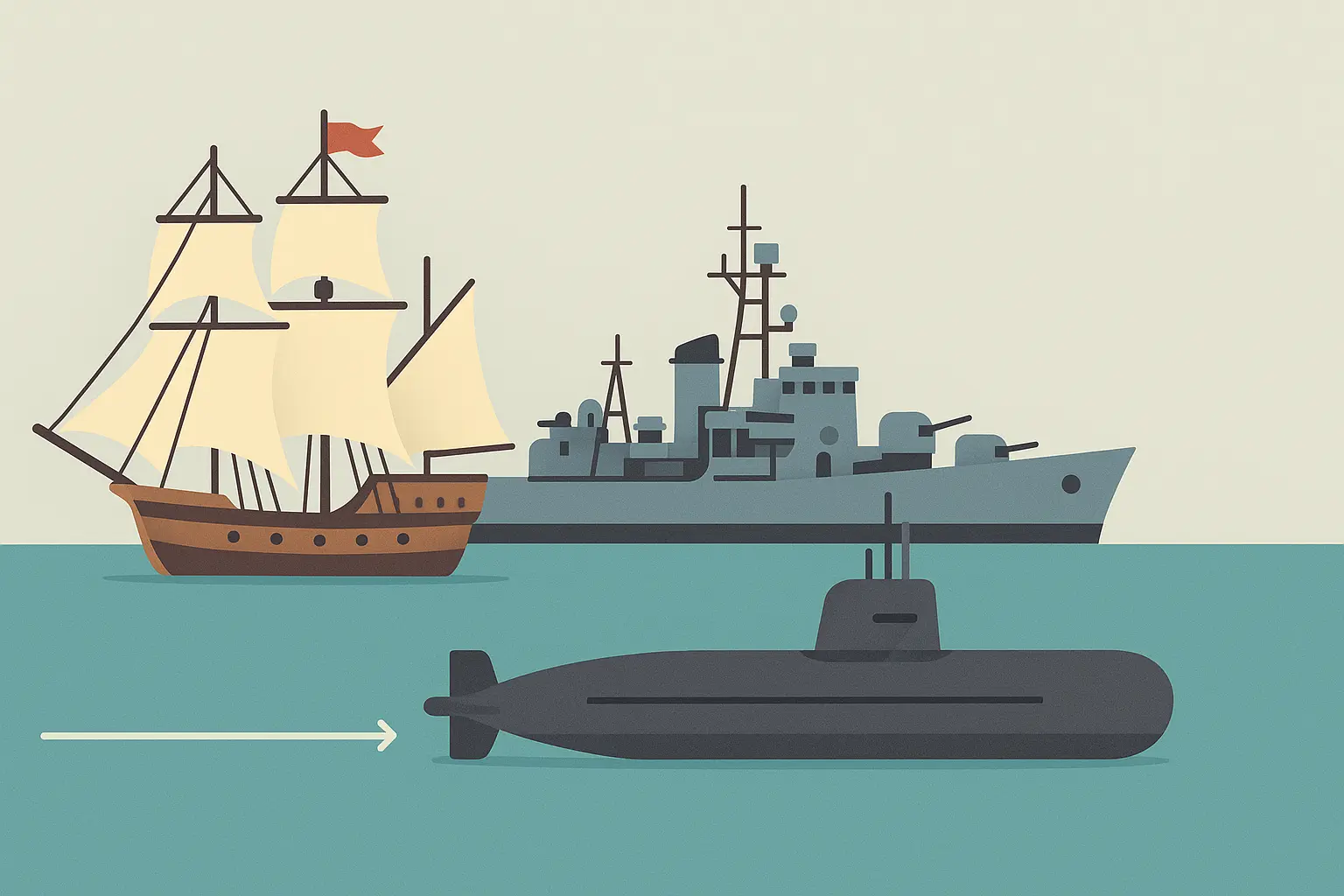
Historical Naval Fiction
Historical naval fiction is where this whole genre got its start, and for good reason. These stories combine serious research with compelling narratives set in past eras, giving you authentic period details, accurate naval terminology, and experiences that transport you back in time. These five stories span from Napoleonic-era adventures to World War II battles, and trust me, once you start reading historical naval fiction, modern stories might feel a little… shallow.
1. “The Last Stand of the Tin Can Sailors” by James D. Hornfischer
This WWII account recreates the Battle off Samar with the kind of detail that’ll make you feel like you’re standing on the bridge during the fight. Hornfischer combines extensive interviews with archival materials to show ordinary sailors facing absolutely extraordinary circumstances.
What blows me away about this book is how Hornfischer manages to make complex naval tactics completely understandable without dumbing anything down. You’ll finish this knowing exactly how a destroyer can take on a battleship and why these sailors deserve every bit of recognition they get.
The story maintains serious historical integrity while remaining totally accessible to regular readers, making it a standout in maritime literature. Fair warning – you might find yourself reading other WWII naval accounts immediately after finishing this one.
2. “Master and Commander” by Patrick O’Brian
O’Brian’s masterpiece sets the gold standard for naval fiction through authentic Napoleonic-era detail that’ll make you an expert on 19th-century seamanship whether you want to be or not. The author’s maritime history background ensures every piece of naval terminology and procedure is spot-on.
But here’s what makes it special – the Aubrey-Maturin friendship provides emotional depth that goes way beyond typical adventure stories. These aren’t just action heroes; they’re real people with flaws, fears, and genuine affection for each other.
Fair warning about this series – it’s like potato chips. You think you’ll just read one, but before you know it, you’ve devoured all 20 books and you’re speaking in 18th-century naval slang to your confused family. I’ve seen it happen to multiple people, and it’s both hilarious and slightly concerning.
3. “The Hunt for Red October” by Tom Clancy
Clancy revolutionized naval thrillers by incorporating authentic submarine technology and Cold War politics that felt real because, well, a lot of it was. The story succeeds through technical accuracy and a multi-perspective narrative that keeps you guessing.
What’s brilliant about this book is how Clancy shows both American and Soviet viewpoints while maintaining suspense throughout the underwater cat-and-mouse game. You’re rooting for characters on both sides, which makes the tension almost unbearable.
Tom Clancy’s technical descriptions are so detailed, you’ll either feel like a submarine expert or fall asleep trying to understand sonar arrays. There’s no middle ground, but most readers find themselves in the first category.
4. “Hornblower and the Hotspur” by C.S. Forester
Forester’s Napoleonic Wars narrative focuses on Horatio Hornblower’s early command experiences, and it’s a masterclass in showing how someone grows into leadership. The story explores naval warfare complexities while developing character through professional challenges that feel genuinely difficult.
Authentic period details create an immersive historical atmosphere that makes you feel like you’re actually serving in Nelson’s navy. Forester knew his naval history, and it shows in every page.
5. “The Cruel Sea” by Nicholas Monsarrat
This powerful WWII story follows British naval officers through North Atlantic convoy duty, and it doesn’t pull any punches about how harsh maritime warfare really was. Monsarrat captures the brutal realities while exploring themes of duty, sacrifice, and survival under conditions that would break most people.
What makes this book special is how Monsarrat balances the big picture of the Battle of the Atlantic with intimate human stories. You understand both the strategic importance and the personal cost.
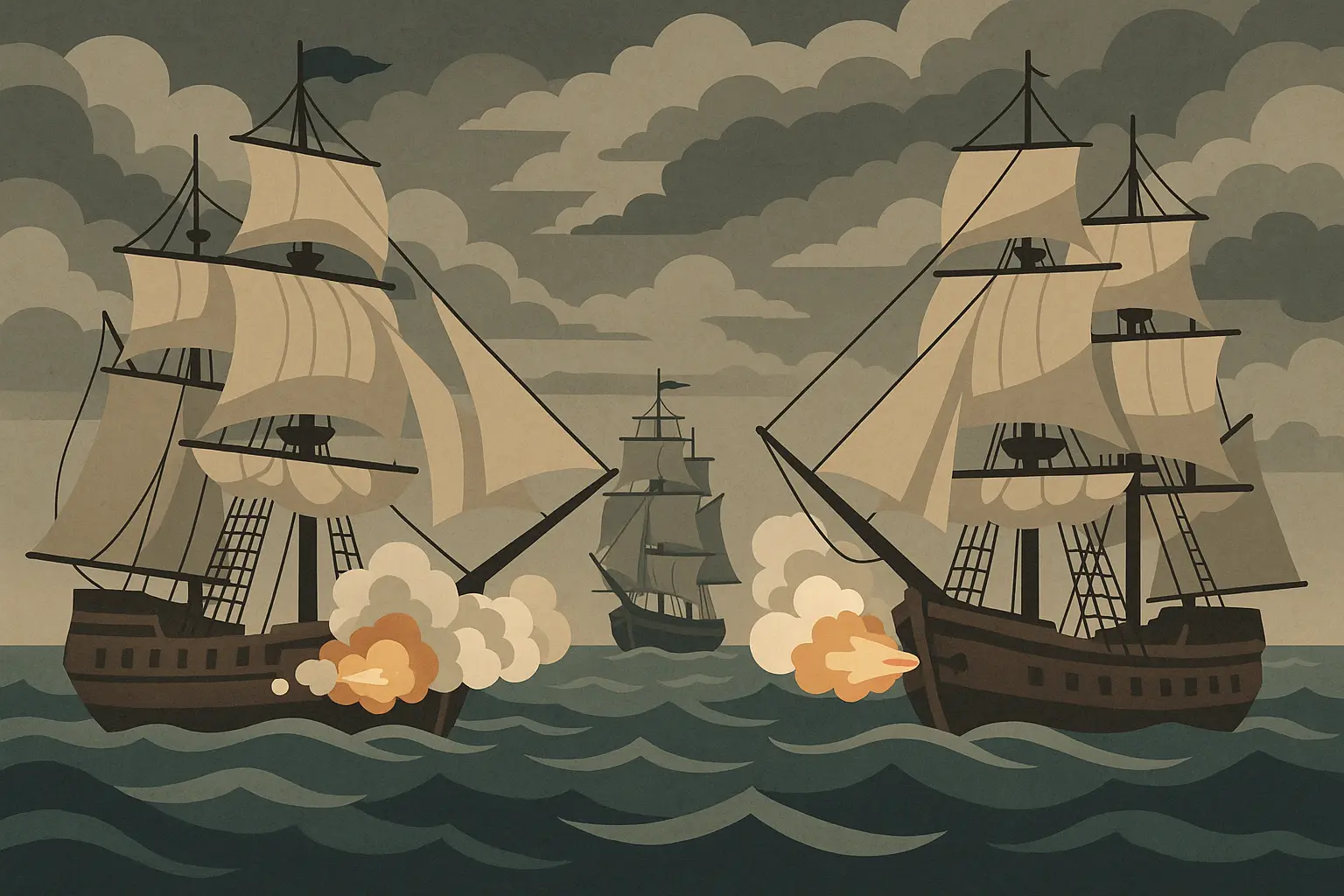
Modern Military Thrillers with Naval Elements
Modern military thrillers bring contemporary naval warfare into sharp focus, and honestly, some of this stuff is so cutting-edge it feels like science fiction until you realize it’s probably happening right now. These four stories blend technical accuracy with high-stakes action, addressing modern naval challenges including cyber warfare, international espionage, and submarine operations that would make Cold War spies jealous.
6. “Ghost Fleet” by P.W. Singer and August Cole
This techno-thriller explores future naval warfare with China through cutting-edge military technology that’s probably closer to reality than any of us want to admit. The authors’ research into emerging naval warfare makes scenarios feel plausible while addressing contemporary concerns about cyber warfare and great power competition.
I found myself constantly wondering how much of this could actually happen tomorrow, and then remembering that some of it probably already is happening. Each naval story in this collection demonstrates how modern technology completely transforms traditional maritime conflicts.
|
Modern Thriller Elements |
Technology Focus |
What’s At Stake |
How Real Is This? |
|---|---|---|---|
|
Cyber Warfare |
Advanced radar systems |
US-China tensions |
Pretty darn real |
|
Drone Operations |
Satellite communications |
Naval blockades |
Happening now |
|
Electronic Warfare |
Stealth technology |
Resource conflicts |
Very real |
|
AI Integration |
Autonomous weapons |
Alliance dynamics |
Coming soon |
7. “The Terminal List” by Jack Carr
A Navy SEAL’s vengeance quest involves maritime operations and naval intelligence, and Carr’s military background provides tactical details that feel completely authentic. The story combines personal drama with professional military operations in a way that keeps you turning pages.
What sets this apart is how Carr balances the technical military stuff with genuine emotional stakes. This isn’t just about cool weapons and tactics – it’s about what happens when the system fails the people who serve it.
8. “Deep Storm” by Lincoln Child
This underwater thriller combines naval operations with scientific mystery in deep-sea research facilities, creating tension through the isolation of underwater settings. Child creates an atmosphere where every sound matters and help is literally miles above your head.
The scientific elements feel credible enough to enhance rather than distract from the narrative, and the underwater setting provides a unique twist on the typical thriller format.
9. “Thunder Below!” by Eugene B. Fluckey
Fluckey’s WWII Pacific submarine warfare memoir offers authentic naval combat experiences straight from someone who lived it. This first-hand account provides unmatched authenticity through personal experience, giving you genuine insights into submarine operations and crew dynamics.
What makes this special is how Fluckey combines tactical details with human stories, showing you both how submarine warfare worked and what it felt like to live through it.
Submarine Stories Featuring Naval Themes
Submarine stories create unique narrative environments that you literally can’t get anywhere else – confined spaces, psychological pressure, and the constant threat of death by drowning in a metal tube hundreds of feet underwater. These four stories explore the claustrophobic reality of submarine service, from German U-boat warfare to Cold War espionage missions, emphasizing the mental and emotional challenges that come with operating in the ocean’s depths.
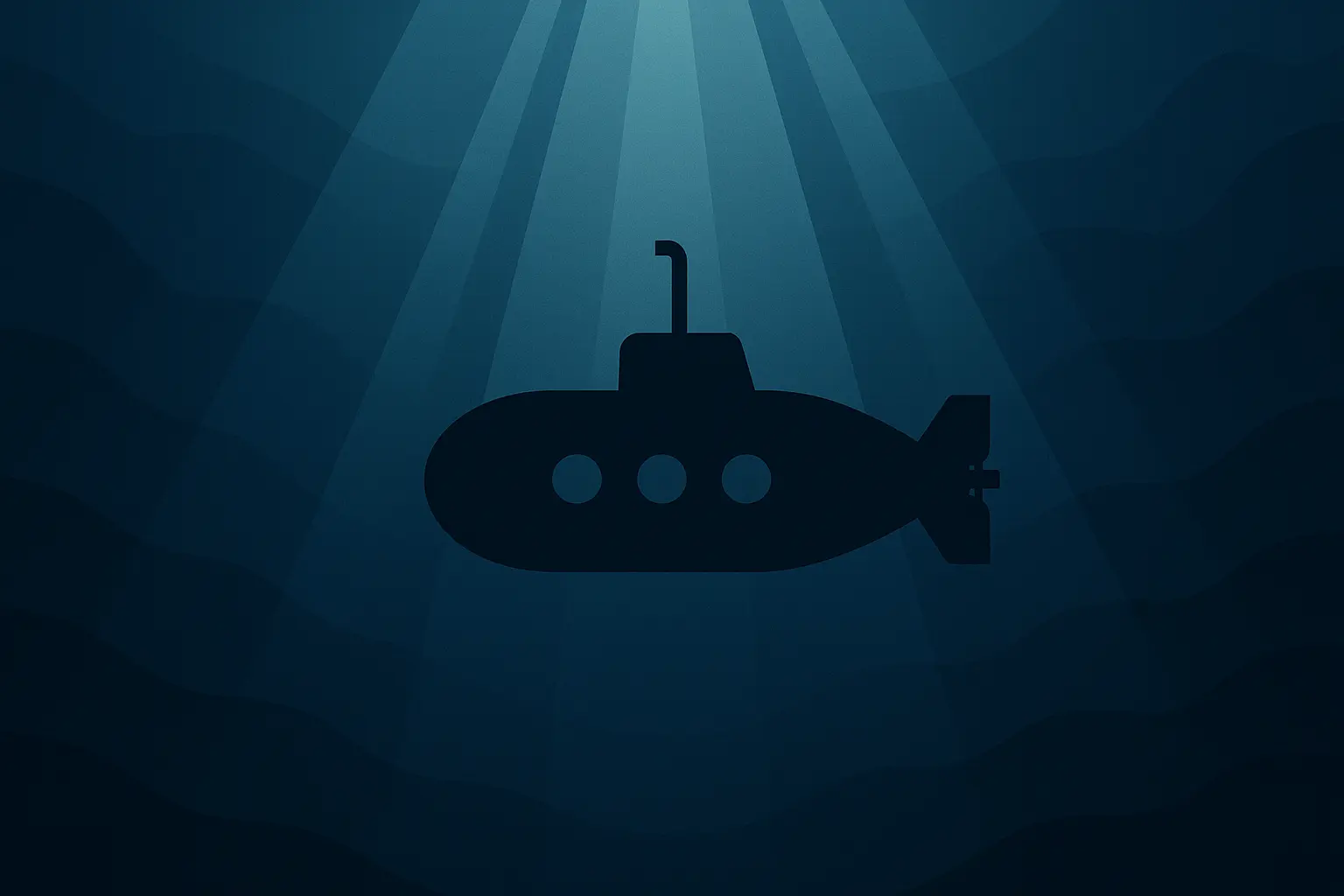
10. “Das Boot” by Lothar-Günther Buchheim
Buchheim’s authentic WWII U-boat portrayal comes from personal submarine experience, and you can feel that authenticity in every claustrophobic page. The story examines the psychological pressure of submarine service without any romanticism – this isn’t glamorous warfare, it’s survival in a metal coffin.
Reading “Das Boot” is like being trapped in a metal tube with a bunch of strangers while someone’s actively trying to kill you. It’s terrifying and you can’t put it down. I’ve read this book three times, and each reading reveals new layers of psychological complexity that I missed before.
What sets submarine fiction apart from surface naval stories is how confined environments intensify everything. A simple equipment malfunction becomes life-threatening. Personality conflicts between crew members escalate into dangerous situations when there’s literally nowhere to escape. This psychological realism makes “Das Boot” one of the most respected works in submarine literature.
Writers studying submarine narratives can learn from examining first-person story examples to understand how personal perspective enhances the claustrophobic tension of underwater settings.
11. “Ice Station Zebra” by Alistair MacLean
This Cold War submarine thriller involves an Arctic weather station rescue mission that’s obviously not what it seems. MacLean combines submarine operations with espionage elements, creating tension through both underwater dangers and international intrigue.
What’s brilliant about this story is how MacLean uses the submarine setting to create isolation and paranoia – when you’re trapped underwater with potential enemies, every conversation becomes loaded with meaning.
12. “Phoenix Sub Zero” by Michael DiMercurio
Modern submarine warfare featuring advanced nuclear submarines and international intrigue that feels like it could be ripped from tomorrow’s headlines. DiMercurio’s technical background provides authentic submarine operations detail while maintaining thriller pacing through complex underwater scenarios.
The technical accuracy in this book is impressive – you’ll learn more about how modern submarines actually work than you probably wanted to know, but in a way that enhances rather than slows down the story.
13. “Blind Man’s Bluff” by Sherry Sontag and Christopher Drew
This non-fiction account reveals secret submarine espionage missions during the Cold War that are so incredible you’ll think they’re made up. The authors balance technical details with human stories through extensive declassified materials and veteran interviews.
What nobody tells you about this book is how it’ll change your perspective on the Cold War. Turns out there was a whole underwater war going on that most of us never knew about, and some of these missions were absolutely insane.
Naval Adventure & Exploration Tales
Adventure and exploration stories capture the romance and danger of maritime life beyond military conflicts, focusing on personal journeys, survival challenges, and the relationship between humans and the sea. These four naval stories range from literary masterpieces to survival epics, exploring themes that go way beyond just ships and battles.
14. “Far Tortuga” by Peter Matthiessen
This literary adventure follows Caribbean fishermen, and Matthiessen’s prose creates such atmospheric immersion in Caribbean maritime culture that you’ll practically taste the salt air. The book explores themes of tradition, survival, and environmental change through the eyes of people who actually live and work on the water.
What makes this special is how Matthiessen captures the rhythm and language of Caribbean maritime life without making it feel like a tourist’s perspective. These are real people doing real work in a harsh environment.
15. “The Old Man and the Sea” by Ernest Hemingway
Hemingway’s classic tale of an aging fisherman’s epic struggle with a giant marlin embodies maritime perseverance in a way that’s both simple and profound. The story explores universal themes of determination, dignity, and the relationship between humans and nature through a maritime setting.
I used to think this book was just about fishing until I actually read it. Sometimes it’s not about the battles; it’s about the person fighting them. This book will stick with you long after you’ve forgotten most other stories.

16. “Two Years Before the Mast” by Richard Henry Dana Jr.
Dana’s 1830s merchant vessel memoir offers authentic maritime experiences from the age of sail, written by someone who actually lived it. The first-hand account provides historical insights into maritime labor, ship operations, and life aboard commercial vessels that you won’t get from fiction.
What’s fascinating is how Dana captures both the romance and the brutal reality of life at sea. This isn’t glamorized – it’s honest about how hard and dangerous this life really was.
17. “Endurance” by Alfred Lansing
Shackleton’s Antarctic expedition survival story demonstrates human resilience against impossible odds, and honestly, if this was fiction, you’d think it was too unbelievable. Lansing recreates the incredible struggle against ice and isolation, showing leadership and teamwork under maritime conditions that would kill most people.
This book will make you feel like your daily problems are pretty manageable in comparison. The fact that these guys survived what they went through is nothing short of miraculous.
Contemporary Naval Fiction
Contemporary naval fiction addresses modern maritime themes while exploring timeless human experiences aboard ships and at sea. These four stories examine leadership challenges, moral courage, and the psychological effects of maritime service, combining classic storytelling techniques with contemporary perspectives that feel relevant to today’s world.
18. “The Ship” by C. Northcote Parkinson
Modern naval fiction exploring leadership challenges and crew dynamics aboard contemporary warships. Parkinson examines command responsibility and crew relationships in modern naval contexts, providing insights into contemporary maritime service that feel authentic and relevant.
What makes this work is how Parkinson balances the technical aspects of modern naval operations with genuine human drama. These aren’t just military stereotypes – they’re real people dealing with real challenges.
19. “Voyage of the Damned” by Gordon Thomas and Max Morgan-Witts
Based on true events following the SS St. Louis and its Jewish refugees during WWII, this story combines maritime setting with historical tragedy in a way that’s both heartbreaking and important. The book explores themes of humanity, politics, and moral responsibility during crisis.
This isn’t an easy read, but it’s an important one. The maritime setting becomes a metaphor for being caught between worlds, with nowhere safe to go.

20. “The Caine Mutiny” by Herman Wouk
This Pulitzer Prize-winning novel explores naval discipline, leadership, and moral courage during WWII, and it’s a masterclass in showing how good people can end up in impossible situations. Wouk examines command authority, crew loyalty, and ethical decision-making under pressure through compelling character development.
What’s brilliant about this book is how it makes you question what you’d do in the same situation. There are no clear heroes or villains – just people trying to do what they think is right under extreme pressure.
21. “Typhoon” by Joseph Conrad
Conrad’s classic maritime literature explores a ship’s encounter with a devastating storm and human nature under pressure. The story examines leadership, crew dynamics, and human behavior when facing natural forces that are completely beyond human control.
Conrad’s prose puts you right in the middle of the storm, and you’ll feel every wave that crashes over the ship. This is nature writing and maritime fiction at its absolute best.
Biographical & True Naval Stories
Biographical and true naval stories provide authentic insights into real naval experiences, leadership decisions, and historical events that actually shaped maritime history. These four accounts range from comprehensive biographies of naval leaders to collections of first-hand experiences, offering readers genuine perspectives on naval service across different eras and conflicts.
22. “Admiral Nimitz” by E.B. Potter
Potter’s comprehensive biography of the Pacific Fleet commander reveals naval strategy development during WWII, and it’s fascinating to see how individual leadership can alter the course of history. The biography explores strategic thinking, leadership under pressure, and decision-making processes that shaped Pacific theater operations.
What impressed me most about this book is Potter’s ability to make complex strategic decisions understandable to civilian readers. You’ll finish this understanding not just what Nimitz did, but why he made the choices he made.
23. “The Last Stand of the Tin Can Sailors” by James D. Hornfischer
This true Battle of Leyte Gulf story demonstrates American sailor heroism against overwhelming odds, and Hornfischer uses extensive research to recreate naval combat with unprecedented detail and human drama. The fact that this actually happened makes it even more incredible.
These sailors faced impossible odds and somehow pulled through. Reading their story will make you appreciate the courage of ordinary people in extraordinary circumstances.
24. “Down to the Sea” by William J. Toti
Toti’s modern naval memoir explores contemporary submarine service and leadership challenges from someone who actually lived it. The first-hand account provides insights into modern naval operations, command responsibility, and submarine service realities that you won’t get from fiction.
What makes this valuable is how Toti balances the technical aspects of modern naval service with genuine human insights about leadership and responsibility.
25. “Sailor’s Tales” by Various Naval Veterans
This collection features first-hand accounts from naval personnel across different eras and conflicts, providing multiple perspectives on naval service experiences. From peacetime operations to combat situations, these stories give you diverse insights into what naval service is really like.
The variety of voices and experiences in this collection means you’ll find stories that resonate with different aspects of maritime service and human experience.

How Each Story Matches Your Reading Preferences
Let me break down which books you’ll actually enjoy based on what you’re looking for. I’ve recommended probably hundreds of naval books over the years, and here’s what I’ve learned about matching readers with stories they’ll love.
Genre and Tone Analysis
Historical fiction stories excel in authenticity and period atmosphere – perfect if you love getting completely lost in another time and place. The tone ranges from adventurous to contemplative, emphasizing naval traditions and honor codes that defined maritime service.
Modern thrillers prioritize fast-paced action and contemporary relevance, ideal if you want current world tensions combined with naval action. These stories maintain high tension while exploring modern military technology and international relations that feel ripped from today’s headlines.
Submarine stories create intense, claustrophobic atmospheres emphasizing psychological drama over broad naval action. They appeal to readers interested in unique underwater warfare challenges and crew dynamics under extreme pressure. What nobody mentions about submarine books is how they’ll make you hyper-aware of every sound in your house – that creaking floorboard suddenly sounds like hull damage.
For readers seeking inspiration from these maritime tales, exploring short story examples can provide insights into how effective storytelling techniques translate across different narrative lengths and formats.
|
What You Want |
Start With These |
Why You’ll Love It |
Difficulty Level |
|---|---|---|---|
|
Historical Accuracy |
Master and Commander, Das Boot |
Real details that teach you stuff |
Pretty challenging |
|
Fast-Paced Action |
Ghost Fleet, Terminal List |
Modern thrills that keep you up |
Just right |
|
Character Development |
The Caine Mutiny, Endurance |
Human drama that matters |
Just right |
|
Educational Value |
Admiral Nimitz, Blind Man’s Bluff |
Real insights you can’t get elsewhere |
Challenging |
|
Literary Merit |
The Old Man and the Sea, Far Tortuga |
Beautiful writing that sticks with you |
Challenging |
|
Beginner-Friendly |
The Hunt for Red October, Ice Station Zebra |
Easy to follow, hard to put down |
Perfect for starting |
Historical Accuracy vs. Entertainment Balance
High accuracy stories prioritize historical fact while maintaining engaging narratives. These works extensively research primary sources and veteran accounts, making them valuable for readers seeking educational content alongside entertainment. You’ll learn stuff, but you won’t be bored.
Balanced approach stories combine technical accuracy with dramatic license, creating plausible scenarios that enhance rather than compromise believability. This approach satisfies readers wanting both authenticity and engaging storytelling without getting bogged down in technical details.
Character Development Focus
Individual hero stories focus on personal struggle and transformation, appealing to readers interested in character-driven narratives using naval settings to explore universal themes of courage, determination, and personal growth.
Crew dynamic stories examine leadership, loyalty, and moral courage within naval hierarchies – perfect if you’ve ever wondered how people don’t kill each other when stuck together for months. Leadership challenge stories explore decision-making under pressure and strategic thinking, great for readers interested in military leadership and historical decision-making processes.
Here’s a practical example: if you’re interested in leadership development, start with “Admiral Nimitz” for strategic thinking insights, then move to “The Caine Mutiny” for ethical dilemmas, and finish with “Endurance” for crisis leadership. You’ll get a comprehensive leadership education through naval literature that’s way more engaging than any business book.
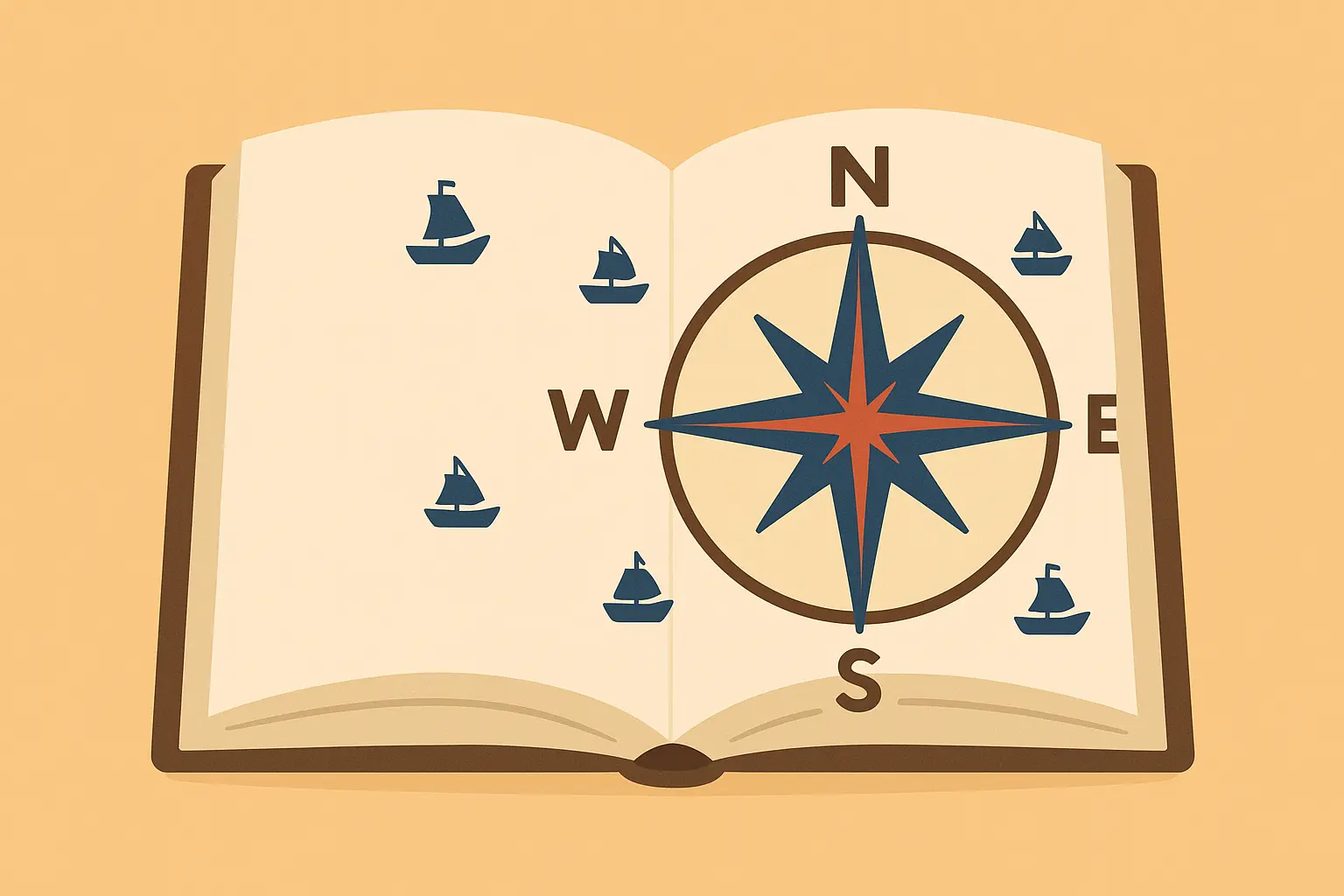
Crafting Your Own Naval Stories with Nairrate
The rich tradition of naval storytelling offers valuable lessons for modern writers seeking to create compelling maritime narratives. Whether you’re inspired by historical accuracy, character depth, or technical precision, these stories show the power of authentic detail and human drama in storytelling.
The precision required in naval fiction – where authentic terminology, accurate procedures, and believable maritime culture are essential – mirrors the careful craft required in all compelling storytelling. Writers must navigate their narratives with the same attention to detail that naval officers use to navigate treacherous waters.
Understanding how to write a story using brain science principles can help aspiring maritime writers create more engaging naval narratives that resonate with readers on a psychological level.
For writers exploring naval themes, Nairrate’s story prompt generator offers tailored prompts that can inspire maritime adventures across any era or setting. Whether you’re crafting a modern submarine thriller, a historical naval battle, or an intimate story of life aboard ship, the tool provides creative challenges that push you to explore new narrative possibilities.
Writers can also benefit from studying anecdote examples to understand how personal maritime experiences can be woven into larger naval narratives for maximum emotional impact.
Ready to chart your course in naval fiction? Nairrate’s AI story generation tools can serve as your creative compass, helping you navigate the challenges of maritime storytelling while maintaining the authenticity and human drama that make the best naval stories unforgettable.
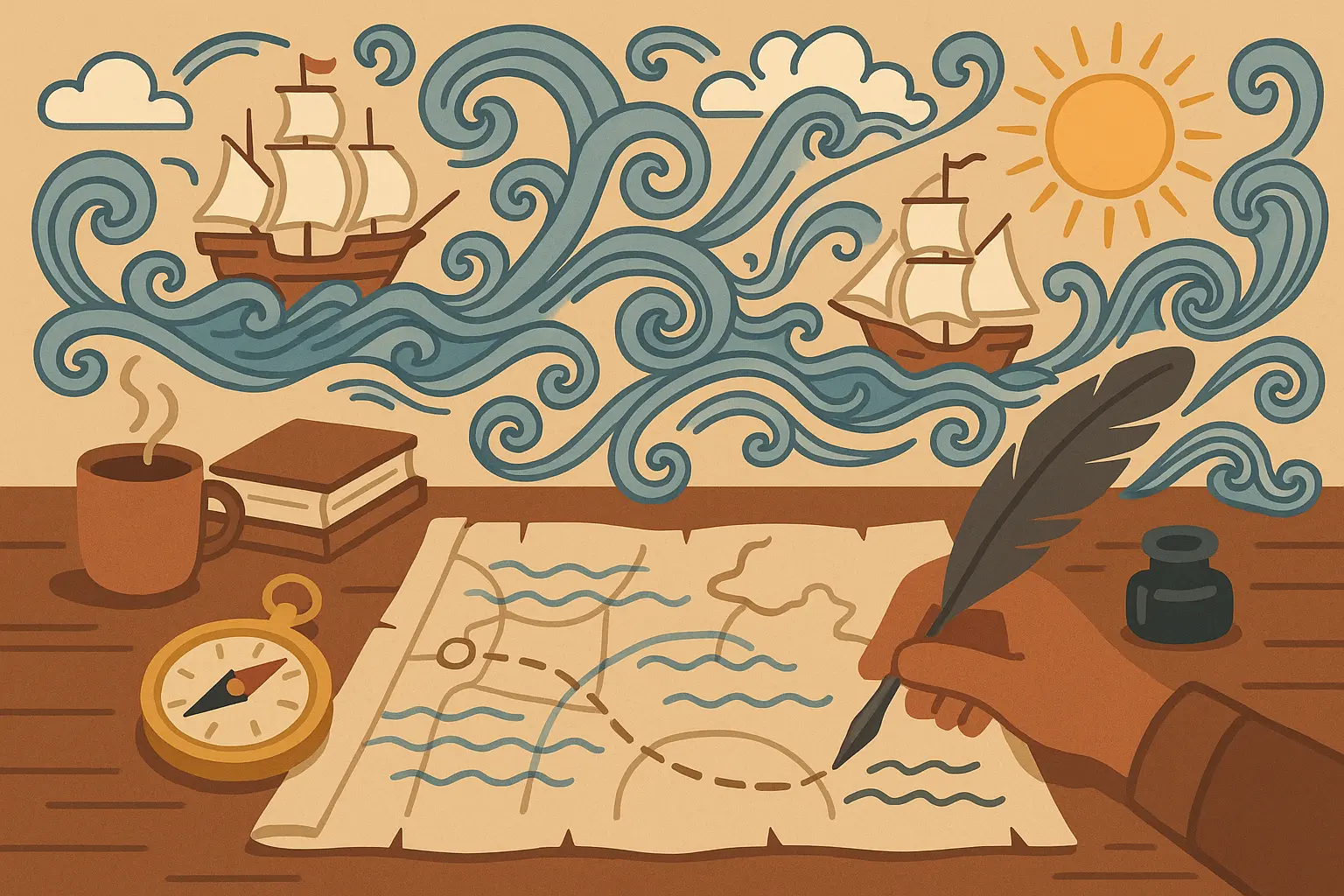
Final Thoughts
These 25 naval stories represent the finest examples of maritime storytelling across multiple genres and time periods. Each offers unique perspectives on naval life, from the claustrophobic tension of submarine warfare to the grand scale of fleet battles, from individual heroism to crew dynamics under pressure that would break most people.
Look, not every book on this list will be your cup of tea. I’ve had friends bounce off “Das Boot” because it’s genuinely depressing, while others couldn’t get enough. That’s okay. The point is finding the stories that grab YOU.
Your choice among these stories depends entirely on your personal preferences for historical accuracy, character development, and what kind of experience you’re looking for. Whether you love books where the authors really did their homework or prefer fast-paced modern thrillers, there’s a naval story here that will capture your imagination and give you exactly the reading experience you’re seeking.
Here’s the bottom line: life’s too short for boring books. The enduring appeal of naval fiction lies in its ability to combine authentic maritime culture with universal human themes of courage, sacrifice, leadership, and survival. These stories remind us that the sea remains one of humanity’s greatest challenges and most compelling settings for exploring what it means to serve, lead, and persevere under extraordinary circumstances.
Whether you end up loving historical epics or modern thrillers, the ocean has stories that’ll stick with you long after you’ve forgotten what you had for lunch yesterday. Pick one that sounds interesting and dive in. The worst that happens? You find your new favorite genre.



Add comment